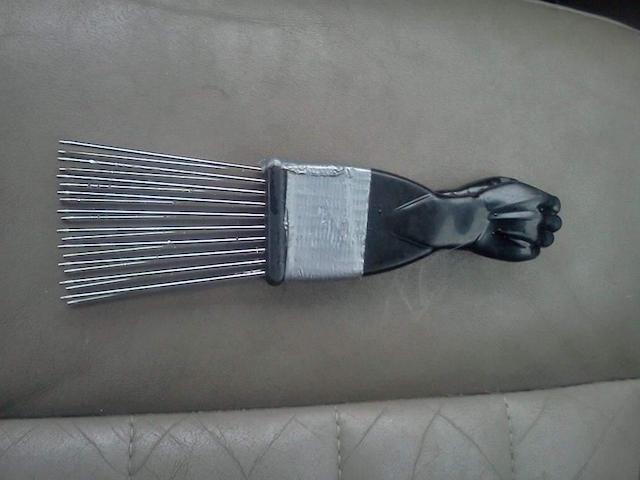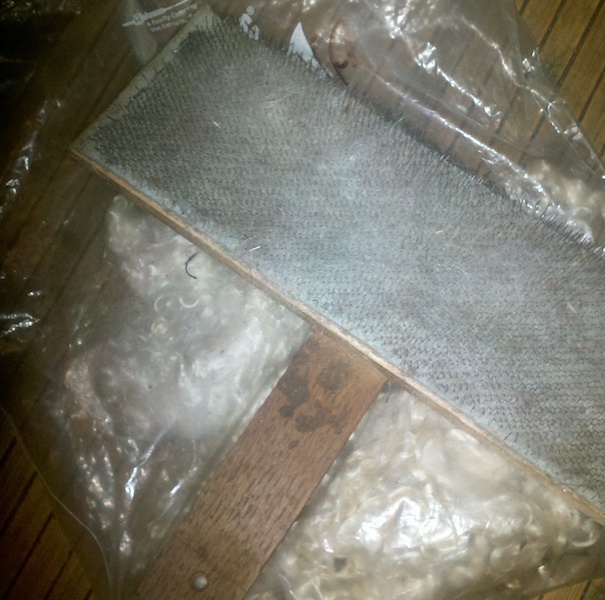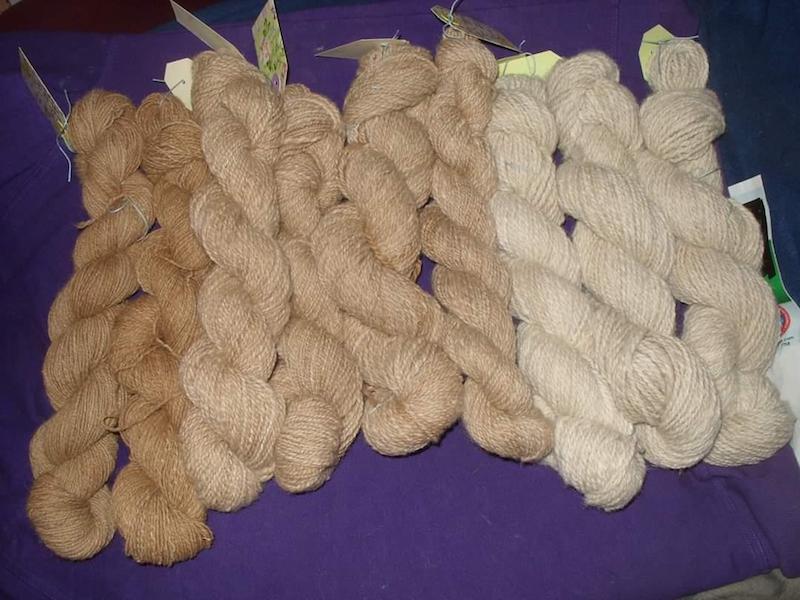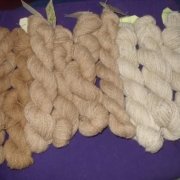Handmaking Spinning Tools
Words and Photos by Denise Williams
Handspinning can be a very expensive craft.
When I decided to start spinning yarn, I had bags of wool but no tools. Internet groups were beginning to spring up, with ample advice encouraging beginners to buy everything under the sun. I’m sure you’ve seen it all: hand carders, drum carders, blending boards, hand combs, hackles… Yes, I wanted every single fiber processing tool there was. However, I had way more time and determination than disposable income. Spinning was not the first nor the only craft in my life, and I know how it is to buy everything out there to find I only use or need a small selection. So I decided to take things slowly and acquire tools as I gained experience and technique dictated.
Maybe when you are starting out, or starting to branch out, you can borrow tools from someone to try out. Unfortunately, at that time, I didn’t know anyone local who was a spinner, so I needed a budget-friendly way to acquire or create what I wanted.
I wish I could remember to credit the place or person where the original idea reached me, with ways to make or repurpose common objects for fiber tools. Surprisingly, I already had the items lying around the house, and I’ll bet you are familiar with these items: pet brushes, horse combs, and afro picks.
I liked to work with smooth, worsted yarns, so my first spinning goal was to reproduce what I used most. For a worsted prep, combs are most appropriate. Wool combs, whether they are viking combs or mini combs, are serious tools, and their price gave me my first taste of sticker shock (well before I bought my wheel).
DIY Combs
My first DIY was trying to find something that could work similarly to the raking action of combs. I started with a long flat hair comb, which isn’t a half-bad idea, except human long combs are not the sturdiest thing. Metal dog combs are sturdy, but the tines are short. So for a while I used a horse comb, made of a heavy enough plastic to rake wool, with longer tines. Still, I couldn’t load much on it. The afro pick became the perfect solution. Now, not all afro picks are created equal. I prefer the metal ones; however, there are a few heavy plastic ones.

My first DIY was trying to find something that could work similarly to the raking action of combs. I started with a long flat hair comb, which isn’t a half-bad idea, except human long combs are not the sturdiest thing. Metal dog combs are sturdy, but the tines are short. So for a while I used a horse comb, made of a heavy enough plastic to rake wool, with longer tines. Still, I couldn’t load much on it. The afro pick became the perfect solution. Now, not all afro picks are created equal. I prefer the metal ones; however, there are a few heavy plastic ones.
DIY Hackle
The very first wool I prepped was medium-stapled Cheviot cross. Using the afro pick worked very well, though as I predicted, my first attempts at spinning didn’t stick, and it was a little more than a year before I would try again. I traded my spindle for a wheel, and that is when the spinning began in earnest. I found I needed a faster way to process more raw wool than a single pair of afro picks could provide. Stringing a group of afro picks together to make my next favorite fiber tool, a hackle, was a very simple build.
All you need is a length of wood, such as a 2×4, a few picks, 2 screws for each pick, and 2 clamps. Set the picks as close as possible to make the gaps even. In some cases, you may have to shave off some of the ends so the picks sit closer. I also found, for the length of the pick, 2 screws hold better than one. Remember to leave room on the ends of the wood for the clamps so they are far enough that they don’t interfere.
DIY Carders
As I explored new fibers, I found I needed to add another tool to my collection: carders.
When it comes to hand carders and flickers, I used pet slickers. Between the German Shepherds and the Angora rabbits, slicker brushes are something I keep, and you bet I’ve tried all kinds of brands to find which will hold up well. Buy the best pet slickers you can afford. Cat brushes seem to have the smallest teeth per inch, but they are also the smallest size. Plastic brushes are less expensive, and I have found those in the largest sizes; I have also found the plastic handles don’t last long, though the cloth holds up pretty well.
Another consideration is buying the carding cloth and building the base and handle. You can purchase a small amount of cloth online for a reasonable price. I bought a quarter inch thick piece of wood from a craft store, glued and then stapled the cloth onto it, and added a handle. Many years later, this is still my go-to large hand carder that I use for all of my flicking preps.

I process 90 percent of my own fibers from raw wool, and while I later bought hackles, carders, and combs, I still find myself reaching for some of my simpler DIY tools. Probably because, just like my handspun yarn, they were handmade to cater to my particular needs. Handspinning is a skill as old as time, with many fine textiles created with simple handmade tools. So don’t let your budget stop you from creating the yarn you want.

Denise Williams, a former school teacher, decided to live her dream and become a writer and artist. Her passion is processing and spinning fibers to knit, crochet, and weave. Denise chronicles her fiber adventures on her YouTube channel, Four Square MicroFarm.





Leave a Reply
Want to join the discussion?Feel free to contribute!